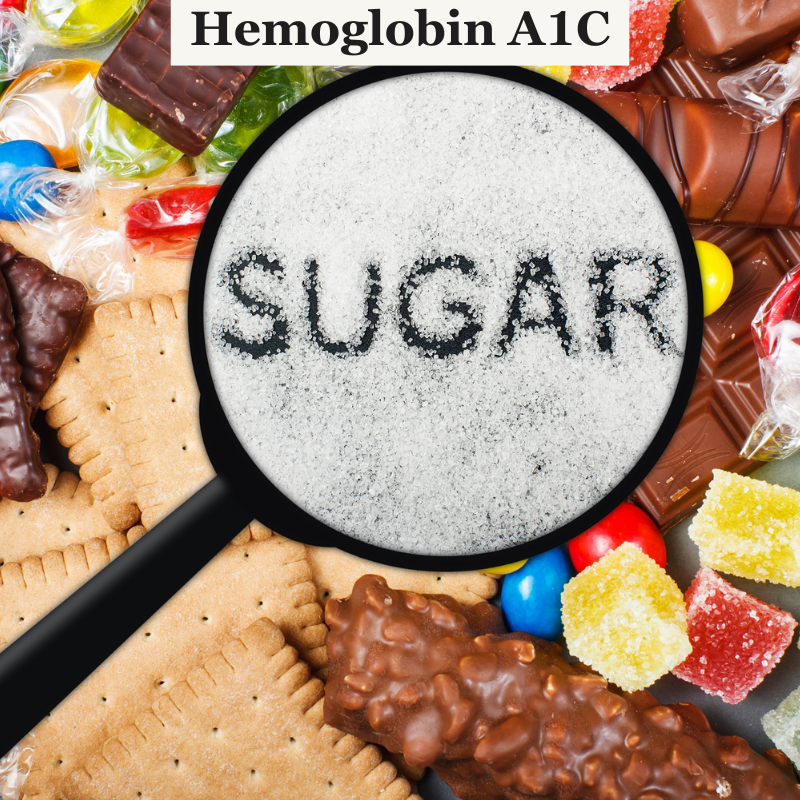The Hidden Truth About HbA1c—And How to Take Control

Blood glucose levels rise sharply. Chronic inflammation. Land mines are circulating in your bloodstream. Sustained high blood sugar leads to metabolic problems. Preventative blood work underpins and strengthens the foundation of good health.
The HbA1C test is one that everyone should know. It could explain your morning sluggishness despite sufficient sleep. This might also explain your mid-afternoon energy slumps.
The Hemoglobin A1C measures the three-month average of your blood sugar levels, granting a glimpse into your body's metabolism and understanding your risk of future chronic disease.
Even though it may seem like a simple test to screen for diabetes, understanding the different levels gives you a better understanding about your body’s health.
What’s Normal—And What’s Not?
A level of less than 5.5 % is the lowest risk for chronic disease.
A blood glucose level of 5.5% to 6.4% shows prediabetes and a higher risk for heart disease. Pancreatic insulin secretion is somewhat impaired in this range.
6.5% or higher signifies diabetes and severe insulin resistance. The down hill rollercoaster to health hell starts unless intervention creates a detour. But here’s the kicker: Damage starts long before you hit 6.5%. Studies show that even at 5.5%, the risk of heart disease, nerve damage, and metabolic dysfunction rises significantly. So, its not all about screening for diabetes.
The perception needs to change
You can have insulin resistance even if you're not obese. Research indicates that a surprisingly high percentage, possibly as much as 40 percent, of individuals who appear lean may unknowingly possess insulin resistance, a condition frequently linked to inadequate nutrition, insufficient muscle mass, and persistent, elevated levels of stress.
You can't hide from the carb police! It's not all about cutting carbs; good sleep, smart eating times, and less processed carbs are important too.
Reversing course and correcting the HBA1C
Strength training is more effective than cardio
It’s always a deer in headlights look. They all ask the same question. What do I need to do to cure my diabetes? I always say strength/resistance training. The same question follows. What is that? A 2022 study found that 3 sessions of strength training per week improved insulin sensitivity more than cardio. Most people, when they exercise, think of going for a run, walk or some form of cardio instead of building strength and muscle, which is the hallmark of an optimized metabolism.
Eating during an 8-hour window
A 2021 study on time-restricted eating showed that eating within an 8-hour window before 3 PM significantly reduced HBA1c levels compared to eating later. Circadian rhythms explain this and the body's changing insulin sensitivity throughout the day, higher in the morning and lower at night. Late night blood glucose spikes are bad for your metabolism.
Magnesium deficiency
A recent study from 2023 found that magnesium supplementation has this profound effect on improving insulin sensitivity even without diet changes. Probably one of the most underutilized nutrients in the treatment of metabolic dysfunction, diabetes and insulin resistance.
Mindset change, applying the “All or something rule.”
Must our habits be perfect? Maybe not. Yet, this pursuit of perfection undermines our efforts to change habits or achieve goals. Instead of thinking all or nothing, let's try for something. I fell for this trap repeatedly. I would tell myself that I lacked the time to complete a workout in a single hour and therefore nothing would get done, even though I could have accomplished at least a small portion in ten or fifteen minutes. Improving is not about perfection, it is about progress.
6 step action plan
- Move daily: 10, 000 steps and 2-3 weight training sessions per week ought to do it.
- Prioritize protein: 1-2g per kg per day of lean body weight, for muscle maintenance.
- Front load your meals: Eat the largest portion of your daily calories before 3-5 pm.
- Fix your sleep: 7-9 hours of sleep fixes metabolic issues and blood sugar problems.
- Magnesium and omega-3s: Both reduce inflammation and improve insulin sensitivity.
- Blood glucose blood work: Check fasting insulin or use continuous glucose monitoring.
Final thoughts
Hba1C is more than a number to screen for diabetes. A number less than 6.5 does not mean you are in the clear and it’s like a smoke before the fire for your metabolism and you need to put it out. Check your HbA1c at least once a year, but you can also check it every three months. The answer to preventing chronic disease mean yearly blood work and adjusting habits. Your life does not get better by chance, it gets better by change." —